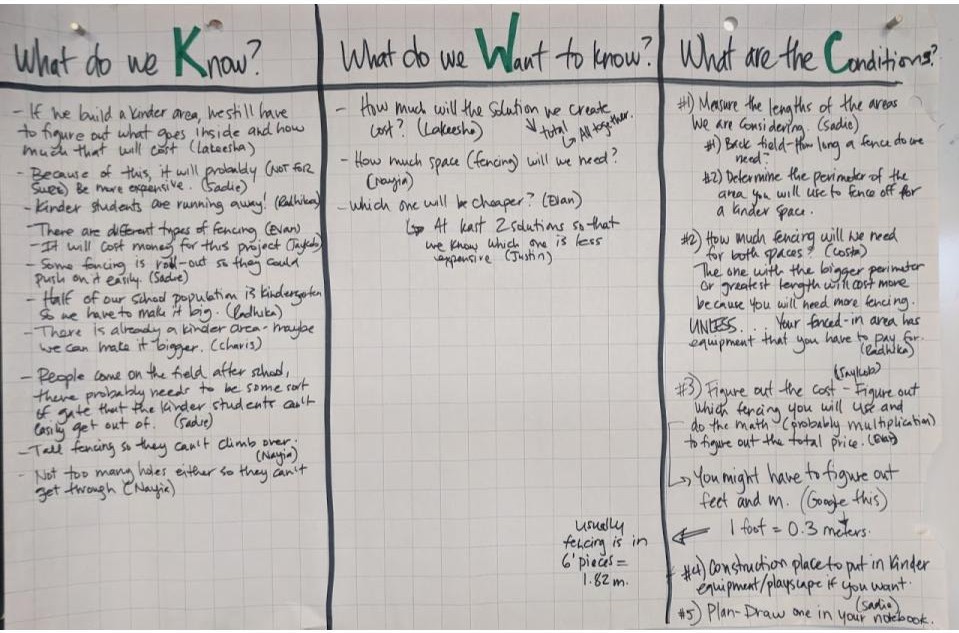As a child, I loved Math. Inherently, there was always something exciting about using what I knew to solve a problem. Whether through the use of a formula or by being able to apply a mathematical concept, for me the world of Mathematics was about finding answers. Now, sometimes it was a means to an end – OAC calculus for getting into my program in university, (aging myself there) – but often times I remember the feeling of accomplishment after solving a problem with one of my parents at the dinner table in the evenings. When I didn’t understand something, my parents always tried to make sense of it in a real-world way. Talking me through the problem or explaining it in a diagram. The more I think of it, I believe that those times have been a foundational part of who I have become as a teacher, as it relates to Mathematics. While there are so many different concepts to teach within the curriculum, I find myself more drawn to and excited about concepts that allow students to see their use in real life and I’m always on the hunt to try and find a real example for everything.
Last month, I wrote about our Chocolongo Challenge. This month, we were hard at work trying to solve the challenge of fencing at our school. As we continued our unit on Measurement, a real problem was identified and students began to use what they know and the tools we have at our disposal to design real solutions.
Sloane Public School opens onto a large field with baseball diamonds and leads further to a trail and public park. On any given day, you can find people walking their dogs through the yard or just going for a stroll. Occasionally, kindergarten students get so excited about the wide-open space that they make a run for it, only to find a teacher running after them to bring them back. With this in mind, students were asked to consider which would be more cost-effective: fencing off the back of the school property or fencing a safer kindergarten area?
To start this problem, we worked together to create a KWC Chart. Together, we determined what we knew; what we wanted to know; and the conditions in order to solve the problem.
From there, using Google’s My Maps, students quickly got to work trying to figure out the length of fencing that they would need. Once they got an idea of the length, they were on a mission to find the pricing of different fencing options. It was pretty amazing to see the different solutions that started coming to life. Some thought of creating a whole new area for the kindergarten students while others thought we could use some of the equipment in our shed and build an enclosed space that would allow them the freedom to explore. Some students were really creative with the fencing and thought of using wood fencing with one side coated in chalkboard paint so that kindergarten students could colour and design.
Ultimately, many students thought it was more economical to fence off the back of the school property and allowed for less disruption of the other activities for older students – like soccer and football which take up a significant amount of space on the field. This week, we wrapped up our unit with presentations and it was fantastic to see that students had created their own slide presentations to use as proposals to support their solutions. Using some of the feedback from their presentations, students are eager to present their findings to the principal to see if their ideas can be brought to life for a safer school environment for all.
Whenever I’ve introduced these real-world problems to students, they get really excited to solve the problem and consider ways in which they can have an impact on the whole school community. While this one question, that ultimately became a project took several weeks, I’m amazed at all of the learning that was involved. Students learned to:
- use an online tool to accurately measure large distances;
- compare numbers;
- convert measurements;
- multiply;
- think empathetically as they worked to solve a problem for someone else;
- explain their mathematical thinking;
- prepare a proposal to present to their audience;
- and so much more!
I’m always excited about real-world math ideas. Please feel free to share some of yours in the comments!






